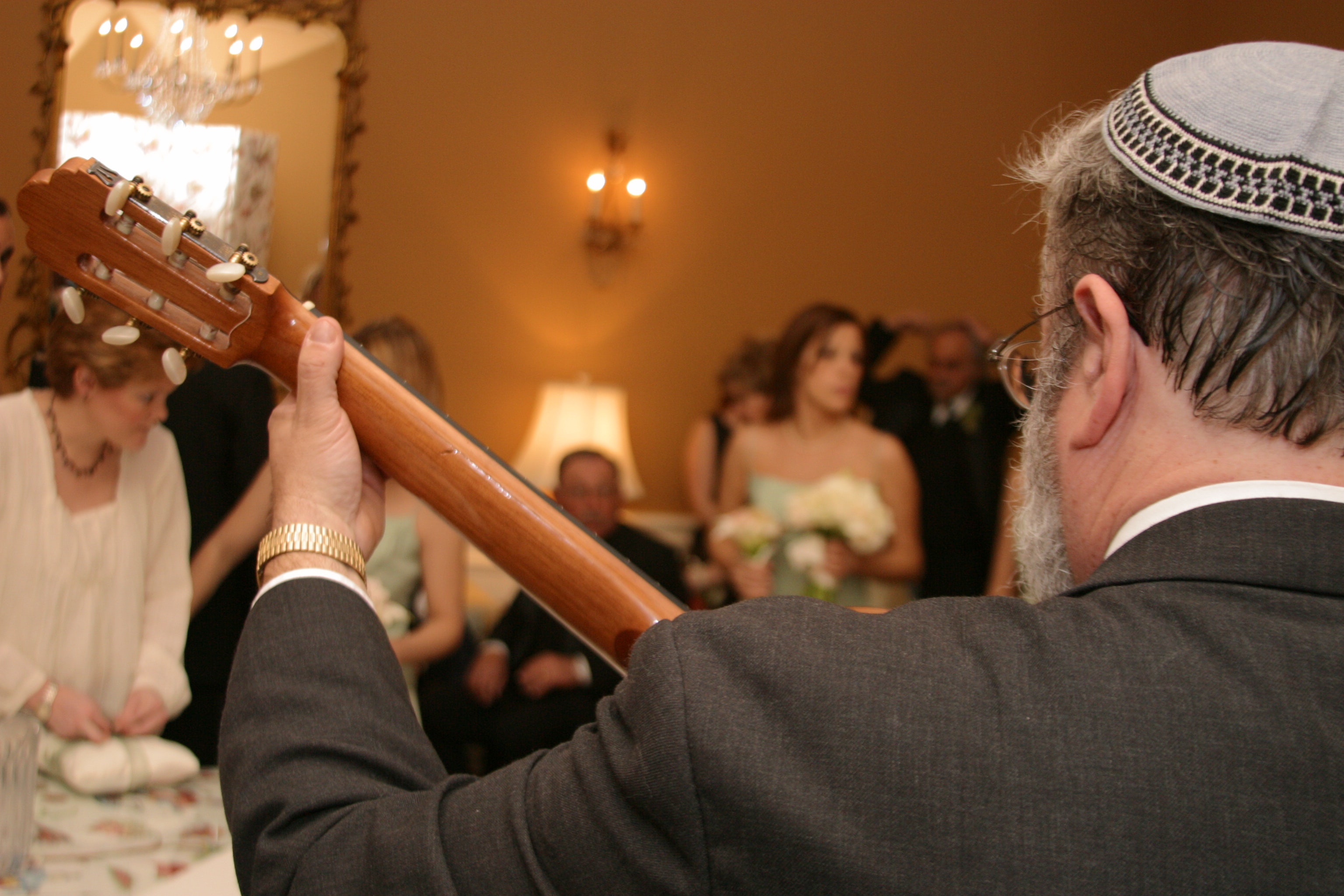10 Traditions in Jewish Wedding
 Mazel Tov! You, your groom, and the entire family must be bursting with excitement about the upcoming big wedding day. Orthodox, conservative, reformed, you have a lot of decisions to make with the Rabbi in planning for the big day. If you want a more traditional Jewish wedding, here are ten traditional customs to make your Safta smile and kefell. Read on as you create memories that you will treasure forever!
Mazel Tov! You, your groom, and the entire family must be bursting with excitement about the upcoming big wedding day. Orthodox, conservative, reformed, you have a lot of decisions to make with the Rabbi in planning for the big day. If you want a more traditional Jewish wedding, here are ten traditional customs to make your Safta smile and kefell. Read on as you create memories that you will treasure forever!
1. For a Week They’ll Be Royals
During the week leading up to a Jewish wedding, the bride and groom receive royal treatment from their friends and family. The Shomer and Shomeret, select friends, act as handmaidens for the groom and bride, respectively, waiting on them hand and foot until the two are man and wife in the eyes of God.
Some couples may also choose to separate this week, so the bride and groom can spend time with their own respective families before creating a new family of their own. Occasionally, some couples wait until the veiling of the bride under the chuppah.
2. Can I Get That in Writing?
In Judaism, the Ketubah is a marriage contract, which outlines the groom’s obligations in the marriage and duties to his bride. Written in Aramaic text, the document commonly hangs in home of the couple, near the front entrance as a sign for family and friends to see. Not just a piece of artwork, the Ketubah represents the groom’s commitment, both to his bride and making the marriage work. Each Ketubah is unique to the married couple, detailing their promises of love, and to stay by each other’s side through life’s challenges. Curiously, the bride and groom don’t sign it Ketubah, but rather witnesses sign, stating that they wholeheartedly believe the groom will adhere with what is written.
3. You’re My Home
While repeating their vows, the couple stands under a Chuppah. This traditional Jewish marriage canopy must have four corners and a roof for them to stand under, as a representation of the home they will build together. Typically, four chosen guests support the canopy, each holding a poll, to show their support of the couple and the life they will create. Canopys can also stand on their own, commonly made of gorgeous blossoms and a flower arrangement with a white prayer shawl, talliet, used as the camopy. While the bride and groom are under the canopy, it is believed that the couple has a direct and divine connection to God, so friends and family pray for good health and fortune in the years to come.
4. Who Is She?
Badeken, sometimes spelled Bedeken, is the veiling of the bride during the Jewish ceremony. Before the wedding begins, the groom sees the bride and then veils her. This was originally taken from an old Jewish legend, where a father tricked a young groom into marrying the wrong woman. Through the time honored Badeken, the groom can reassure himself that his bride is the woman he pledged to love and treasure forever. Additionally, under the Chuppah, the bride represents Moses coming down the mountain with the Ten Commandments. As such, a Divine light emanating from the bride must be covered during the ceremony. These reasons have been modified for the modern age, as true beauty is within, as her outside beauty cannot compare to the light of the bride’s soul and character.
5. United as One
In a Jewish wedding, the groom commonly wears a white prayer robe or shawl, which varies based on his family’s origins. For example, Jews from Eastern Europe, also known as the Ashkenaz, will don a kilt, or a white robe. Jews hailing from the Middle East and North Africa to Portugal wear the tallit—a white prayer shawl. Towards the end of the ceremony the groom places the tallit over not only his shoulders but also the brides. The shared shawl represents that the couple is no longer two people but a single unit, brought together in lasting partnership.
6. A Jewish Blessing
Sheva B’rachot, also known as the Seven Blessings, is a key to any Jewish wedding ceremony. Read in both Hebrew and English by friends and family, the blessings are typically done over a cup of wine. These joyous blessings celebrate the union of two souls. The statements begin simple, and continue on to be grander, more complicated and broader topics. They end on a blessing of peace to the happy couple, that they will be companions and share a jubilant marriage. The blessings touch on the power of love that the couple will celebrate throughout their relationship.
7. Crumbling Walls
The bride circles the groom seven times during the ceremony, as a symbol of breaking down any barriers between the two. The circling represents of the exclusivity of their relationship and union they are creating. Seven is the kabbalistic number of completion. This number was chosen for the tradition, ending the soul search the couple began to find each other.
8. Mazel Tov!
At the end of the Jewish ceremony, the Rabbi wraps a glass in a cloth napkin and hands it to the groom. Placing it on the ground, the groom stomps on the glass with all of his might. The shattered glass figuratively says that there is no turning back once they utter their spoken vow, as the union is one. Upon the shattering, all the guests shout a joyous Mazel tov!
9. Only Us
Following the ceremony, the couple may go alone into what is called Yichud, privacy—which may last a few moments or up to eighteen minutes. Some couples even appoint guards to ensure they will not be disturbed. This seclusion is a symbolism of their new relationship and their label as married.
10. Dancing The Night Away at Your Wedding
After the Jewish Wedding comes the real party, the reception! The bride and groom eat their fill and dance with all of their friends and family. During the traditional Horah dance, the guests lift the bride and groom on chairs, bringing them above their heads into the air. There is also the Krenzl, which celebrates the mother of the bride, crowning her with flowers.
And that’s it! If you desire a traditional Jewish wedding, make time for these traditions as you plan your wedding! Need help? Contact the Manor in New Jersey today! Our wedding planners are more than happy to bring you the traditional wedding you’ll look back on with happiness.


